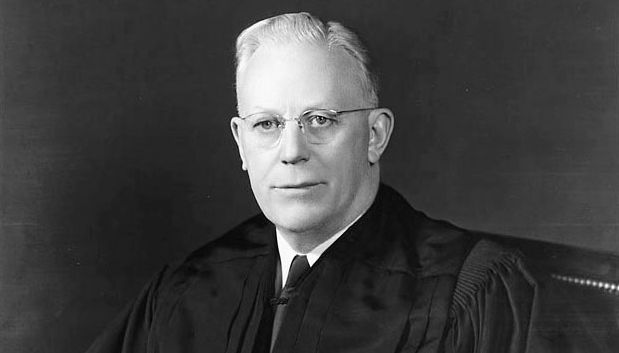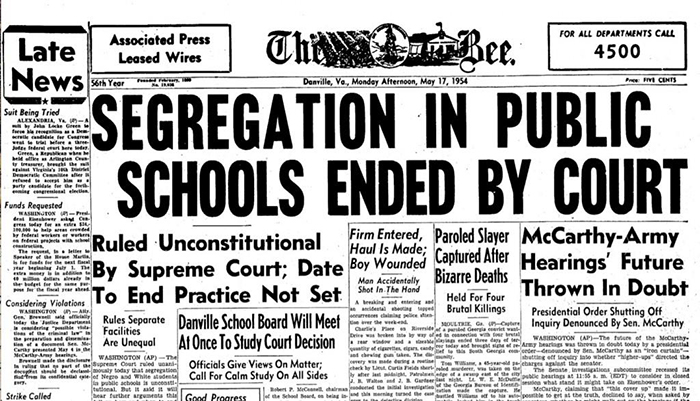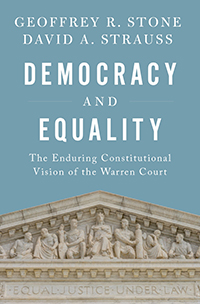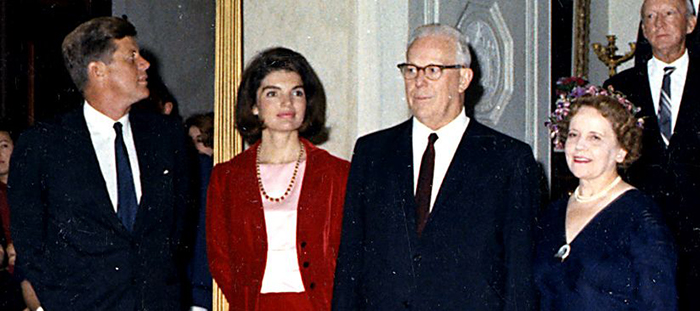In many ways, the Constitution as we know it results from their landmark decisions.
-
Winter 2020
Volume64Issue1
A half-century ago, Chief Justice Earl Warren retired from the Supreme Court, marking the end of the Warren Court in 1969. In many ways, the Constitution as we know it today is the result of judgments handed down in the 16 years after President Eisenhower appointed Warren to be Chief Justice.
Despite its accomplishments, the Warren Court today does not have the reputation it deserves. Conservative critics attack it as “lawless.” Some supporters are defensive — suggesting, for example, that while the Warren Court did good things, its decisions were not always legally sound.

Critics who say that the Warren Court went too far or was too activist should ask themselves: which of the Warren Court’s decisions would you overturn? Would you say that states should have the power to segregate public schools? Or make it a crime to marry someone of a different race? Or forbid married couples to use contraceptives? Would you really reject the principle of one person, one vote? Do you disagree that the central meaning of the First Amendment is that people must be free to criticize the government? Or that a criminal defendant who can’t afford a lawyer should have one nonetheless? Some of the most conservative Supreme Court justices of the last fifty years have accepted — even celebrated — the warnings required by the Warren Court’s once-controversial decision in Miranda v. Arizona.
What made critics call the Warren Court activist or excessive?
The innovative decisions of the Warren Court changed the law, and society. Like the Supreme Court of John Marshall, the Warren Court had a vision of the role that the highest court should play in American government. But the justices of the Warren Court did not simply impose that vision on society. To the contrary, even their most controversial decisions had deep roots in American law and traditions.
Critics often portray the members of the Warren Court as judicial imperialists who took over policymaking from elected representatives. But that’s not what the Warren Court did. Earl Warren was one of the most successful politicians of his generation — and, by the way, a Republican — and the Warren Court’s most fundamental commitment was to the principles of democracy. The Warren Court was, in fact, conspicuously reluctant to strike down Acts of Congress.
Many of the Warren Court’s greatest decisions did reject laws enacted by the states. But those decisions, too, reflected a deep commitment to democracy. The Warren Court acted on the premise that the role of the Supreme Court is to intervene when American democracy was not truly democratic: when some groups were marginalized or excluded and denied their fair share of democratic political power. Most important, the Warren Court protected the interests of African Americans in the Jim Crow South, who were effectively kept from voting in many places and were utterly excluded, often violently, from positions of influence.
The Warren Court protected political dissidents, stating unequivocally that free and open debate is a central commitment of any democratic government. In its “one person, one vote” decisions, the Warren Court put an end to manipulative and unjustified disparities in people’s ability to elect their representatives. The Warren Court acted on behalf of members of minority religious groups whose interests were disregarded by the majority, and of criminal defendants who were often also members of discriminated-against minority groups and who lacked any effective voice in politics.

Contrary to the critics, this was a principled and appropriate role for the Supreme Court to play. Ordinarily, the people’s elected representatives should make the important political decisions in a democracy. If the courts are to step in, they must have a reason: a reason why a particular issue should not be left to ordinary democratic processes. ln the cases that made the Warren Court famous, there were such reasons.
That’s why the Warren Court decisions have held up over time. In an interview near the end of his career, Earl Warren said that if the “one person, one vote” decisions had come earlier, Brown v. Board of Education — the decision that struck down school segregation — would not have been necessary, because truly democratic governments would have abolished segregation without the courts’ intervention. Warren’s statement may have been unrealistic, but it reflected his deep belief in democracy, one that guided the work of his Court. The Warren Court did the things — fighting race discrimination, making sure that everyone’s vote counted the same, protecting dissidents from a majority that wanted to silence them — that a democracy needs to do and that elected representatives cannot always be trusted to do.
American law has always built on foundations laid in the past. The Warren Court’s decisions implemented deeply rooted American traditions of equality, democracy, and respect for the dignity of individuals — traditions that began with the framing of the Constitution and were revitalized by the Reconstruction Amendments, and to which generations of judges, elected officials, and ordinary citizens have contributed. Those traditions have not always been honored as they should be; the Warren Court’s mission was to extend them to people who had previously been excluded. The Warren Court’s decisions have survived — and often become inviolate and celebrated — because they were in touch with our deepest national commitments.
The Warren Court built on the past in another way, too. Time and again in their landmark decisions, the Warren Court justices relied on the lessons of experience. Brown v. Board of Education overturned the doctrine of “separate but equal” because the previous half-century showed that segregated facilities are always unequal. Mapp v. Ohio extended the Fourth Amendment exclusionary rule to the states because decades of experience showed that there was no other effective way to deter unlawful searches.
Reynolds v. Sims, the most important “one person, one vote” decision, was just the latest of many steps in the progress toward democratic equality that began with the nation’s founding. Miranda v. Arizona grew out of the Court’s recognition that it was essentially impossible for courts meaningfully to review, case by case, criminal defendants’ confessions that police officers had used questionable methods to induce.
New York Times v. Sullivan and Brandenburg v. Ohio distilled the accumulated wisdom of two centuries’ worth of efforts to protect political dissent, from the framers’ adoption of the First Amendment through the wrenching crises of the twentieth century.

The idea that the Warren Court wasn’t lawful because it wasn’t originalist has things backward. The fact that even conservatives are unwilling to repudiate the central Warren Court decisions shows that originalism is not viable — and that the approach the Warren Court took has a more solid foundation in the law than anything originalism can provide.
The justices of the Warren Court were of course the product of the times in which they lived. They had many of the weaknesses and blind spots of their contemporaries. It is not surprising that they got some things wrong. Even in the area for which the Warren Court is most famous — school desegregation — the Warren Court has been criticized for doing too little, too slowly, although there are two sides to the story: considering the resistance to the Brown decision, moving more quickly might have been counterproductive.
But some Warren Court decisions seem plainly wrong even judged from within the Warren era; in fact, they seem inconsistent with the Warren Court’s central commitments. In United States v. O’Brien, for example, the Court — in an opinion by Chief Justice Warren — upheld the conviction of a person who burned his draft card as a form of symbolic protest against the Vietnam War and the draft, even though the statute under which he was convicted was, quite clearly, enacted because Congress wanted to punish opponents of the Vietnam War.
In Swain v. Alabama, the Court refused to say that peremptory challenges based on the race of a prospective juror were unconstitutional, effectively enabling prosecutors in segregationist states to continue to exclude blacks from juries. ln Walker v. City of Birmingham, the Court upheld contempt of court convictions of Martin Luther King, Jr. and others for violating a clearly unconstitutional injunction against a civil rights march.
The Warren Court also did nothing about sex inequality; the Supreme Court’s first decision invalidating a law because it discriminated against women came two years after Warren retired, although at that point all five of the remaining Warren Court justices joined the majority. The Warren Court was also comfortable with capital punishment, which the Burger Court began to limit. And, unsurprisingly, arguments in favor of gay rights were nowhere in the picture for the Warren Court, even though gay people, at the time, were a quintessential example of a group that was wrongly discriminated against.

These failures tell us something not just about the Warren Court but also about why, even under the best of circumstances, courts cannot always be counted on to remedy the kinds of societal wrongs that the Warren Court dealt with. A group that is marginalized and treated as inferior has to gain a certain degree of status before it even becomes visible to the kind of people who are likely to sit on the Supreme Court. Until then, discrimination against that group will not even register as a problem. By the 1950s, African Americans had achieved that status; gays had not. You have to get some political power before you can make people see that you are being created wrongly.
The things the Warren Court got wrong — often by being too cautious — should not be ignored. But it acted in a principled manner to try to make democracy work the way it should, and deferred to elected officials when there was no reason to believe that the democratic process had failed. We have moved well past the Warren Court era, of course. It is not clear when, or if, there will again be a Court with the same aspirations and commitments. But it is worth keeping in mind what it accomplished, if only to give us an idea of what is possible.
From Democracy and Equality: The Enduring Constitutional Vision of the Warren Court by Geoffrey R. Stone and David A. Strauss. Copyright © 2020 by Oxford University Press and published by Oxford University Press. All rights reserved.

